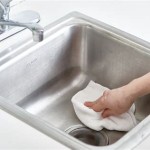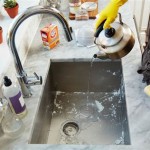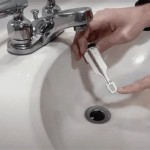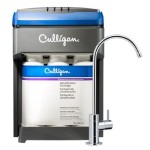How To Unclog A Bathroom Sink
A clogged bathroom sink is a common household problem, often resulting from the accumulation of hair, soap scum, toothpaste, and other debris that gradually restrict water flow. Addressing this issue promptly is essential to prevent further inconvenience and potential plumbing complications. This article provides a comprehensive guide on how to effectively unclog a bathroom sink, outlining various methods and preventative measures.
Identifying the Cause and Severity of the Clog
Before attempting to unclog a bathroom sink, it's crucial to assess the situation. Determining the severity of the clog will help in choosing the most appropriate method for resolution. A slow drain may indicate a minor blockage that can be easily addressed, while a completely stopped drain suggests a more significant obstruction requiring more assertive techniques.
Carefully observe the water level in the sink. If the water drains slowly or not at all, it signals a clog. Inspect the drain visually for any visible debris, such as hair or large particles. Consider the history of the drain; frequent clogs may point to an underlying issue or the need for preventative measures.
Smell the water in the sink. A foul odor emitting from the drain can indicate a buildup of organic matter, contributing to the blockage. The presence of unusual noises, such as gurgling or bubbling sounds, can also suggest air being trapped in the drainpipe due to the clog.
Methods for Unclogging a Bathroom Sink
Several methods can be employed to unclog a bathroom sink, ranging from simple to more advanced techniques. The choice of method depends on the severity of the clog and the tools available.
Using Hot Water
The simplest approach is to pour hot water down the drain. This method is effective for dissolving soap scum and grease, which are common culprits in sink clogs. Boiling water is generally recommended, but caution should be exercised when dealing with PVC pipes, as excessive heat can potentially damage them. If the drainpipes are made of PVC, use hot tap water instead of boiling water.
Remove any standing water from the sink. Carefully pour hot water down the drainpipe, ensuring it does not splash back. Allow the water to sit for a few minutes to allow it to work on the clog. Repeat the process several times, checking for improved drainage after each pour.
Employing a Plunger
A plunger is a common household tool effective for dislodging clogs in sinks and toilets. It creates suction that can break up obstructions in the drainpipe. A cup plunger, specifically designed for flat surfaces, is typically used for sinks.
Ensure there is enough water in the sink to cover the cup of the plunger. Cover the overflow drain with a wet cloth or your hand to create a tight seal and prevent air from escaping. Place the plunger cup over the drain opening, ensuring a good seal. Push and pull the plunger up and down vigorously for several minutes, maintaining the seal. Remove the plunger and check if the water drains. Repeat the process if necessary.
If the plunger is not working effectively, adding a small amount of petroleum jelly around the rim of the plunger can improve the seal. After plunging, run hot water down the drain to flush away any loosened debris.
Utilizing Baking Soda and Vinegar
A combination of baking soda and vinegar creates a chemical reaction that can effectively break down clogs. This method is a natural alternative to harsh chemical drain cleaners and is generally safer for pipes and the environment.
Remove any standing water from the sink. Pour one cup of baking soda down the drainpipe, followed by one cup of vinegar. The mixture will fizz and bubble. Let it sit for 30 minutes to an hour. Flush the drain with hot water. If the clog persists, repeat the process.
For particularly stubborn clogs, consider letting the baking soda and vinegar mixture sit overnight before flushing with hot water. This allows more time for the reaction to break down the obstruction.
Disassembling and Cleaning the P-Trap
The P-trap is a curved section of pipe located under the sink, designed to trap debris and prevent sewer gases from entering the home. It is a common location for clogs to form. Disassembling and cleaning the P-trap can often resolve stubborn sink blockages.
Place a bucket or container under the P-trap to catch any water or debris. Loosen the slip nuts that connect the P-trap to the drainpipes. Carefully remove the P-trap. Empty the contents of the P-trap into the bucket. Clean the inside of the P-trap with a wire brush or a bent wire hanger to remove any accumulated debris.
Reassemble the P-trap, ensuring the slip nuts are tightened securely but not overtightened. Run water down the drain to check for leaks. If leaks are present, tighten the slip nuts further or replace the washers if necessary.
Using a Drain Snake
A drain snake, also known as an auger, is a flexible tool designed to reach deep into drainpipes and break up or retrieve clogs. It is particularly useful for removing hair and other solid obstructions.
Insert the drain snake into the drain opening. Rotate the handle of the drain snake to feed it further into the drainpipe. When resistance is felt, indicating the presence of a clog, continue rotating the handle to break up or snag the obstruction. Pull the drain snake out of the drainpipe, removing any debris attached to it. Repeat the process until the drain flows freely.
After using a drain snake, flush the drain with hot water to remove any remaining debris. Be cautious when using a drain snake to avoid scratching the inside of the drainpipe.
Preventative Measures
Preventing clogs is easier and more cost-effective than dealing with them after they occur. Implementing preventative measures can significantly reduce the likelihood of future blockages.
Installing a Drain Stopper or Screen
A drain stopper or screen catches hair and other debris before they enter the drainpipe. These devices are inexpensive and easy to install, providing a simple and effective way to prevent clogs.
Choose a drain stopper or screen that fits the drain opening of the sink. Place the drain stopper or screen over the drain opening. Regularly clean the drain stopper or screen to remove accumulated debris.
Flushing with Hot Water Regularly
Regularly flushing the drain with hot water helps to dissolve soap scum and grease before they accumulate and cause a clog. This simple practice can significantly reduce the frequency of sink blockages.
Once a week, pour hot water down the drainpipe. Allow the water to sit for a few minutes to dissolve any buildup. This practice is particularly effective if the sink is frequently used for shaving or other activities that generate debris.
Avoiding the Disposal of Certain Items Down the Drain
Certain items should never be disposed of down the drain, as they can contribute to clogs and damage the plumbing system. These items include hair, grease, coffee grounds, and feminine hygiene products.
Dispose of hair and other solid debris in the trash. Pour grease into a container and dispose of it properly instead of pouring it down the drain. Avoid putting coffee grounds down the drain, as they can accumulate and cause blockages. Properly dispose of feminine hygiene products in the trash.
Regularly Cleaning the Sink and Drain
Regularly cleaning the sink and drain helps to prevent the buildup of soap scum and other debris that can contribute to clogs. This practice involves cleaning the sink basin, the drain opening, and the area around the faucet.
Clean the sink basin with a mild detergent and water. Rinse the sink thoroughly with clean water. Use a brush or cloth to scrub the drain opening and remove any visible debris. Clean the area around the faucet to remove soap scum and water stains.
Periodically pour a cup of baking soda down the drain, followed by hot water, to help dissolve any buildup in the drainpipe. This practice is especially effective for preventing clogs caused by soap scum and grease.

How To Unclog A Bathroom Sink Hana S Happy Home

5 Natural Ways To Unclog A Bathroom Sink Hiller How

How To Unclog A Sink The Right Way Youtube

How To Unclog A Slow Running Bathroom Sink Drain 10 Options

How To Unclog A Bathroom Sink Quickly
How To Unclog A Sink 4 Easy Ways

How To Unclog A Bathroom Sink Hana S Happy Home

Expert Plumbing Tip How To Unclog A Bathroom Sink Garden City Useful Information

How To Unclog A Bathroom Sink The Home

How To Keep Drains From Clogging Bathroom Sink Drain Stopper Diy







